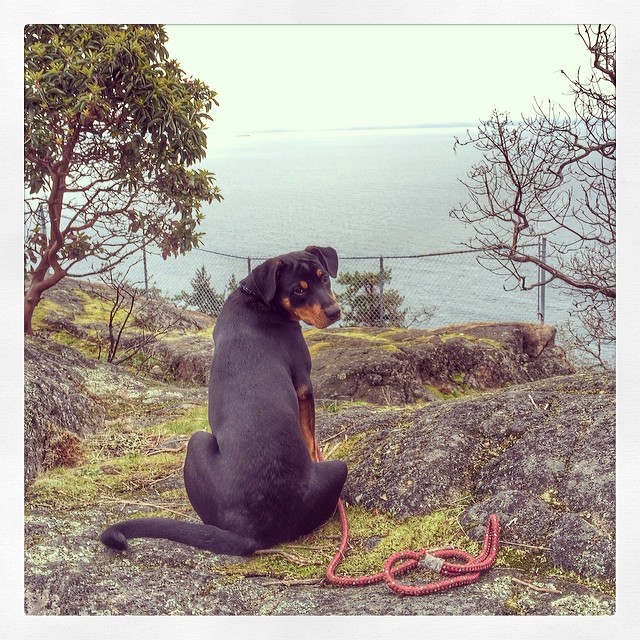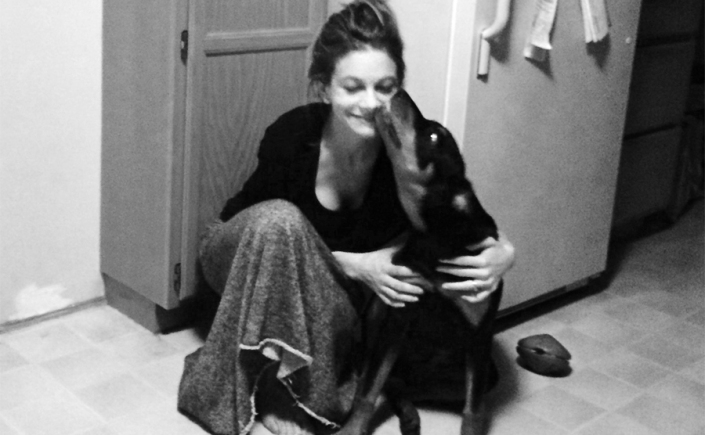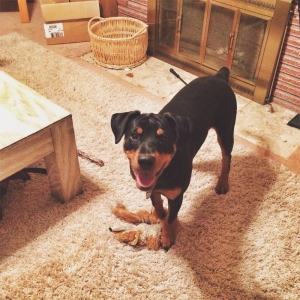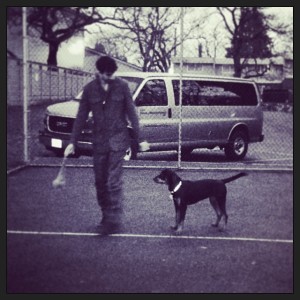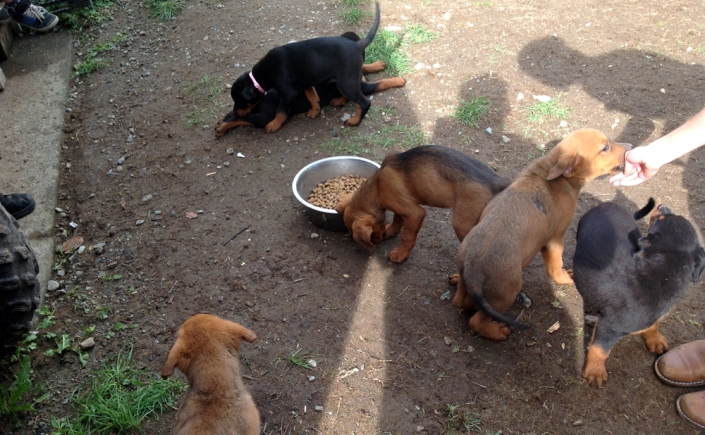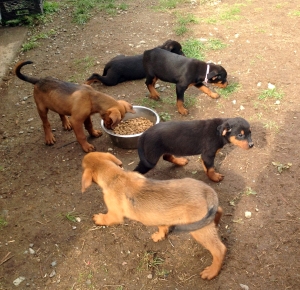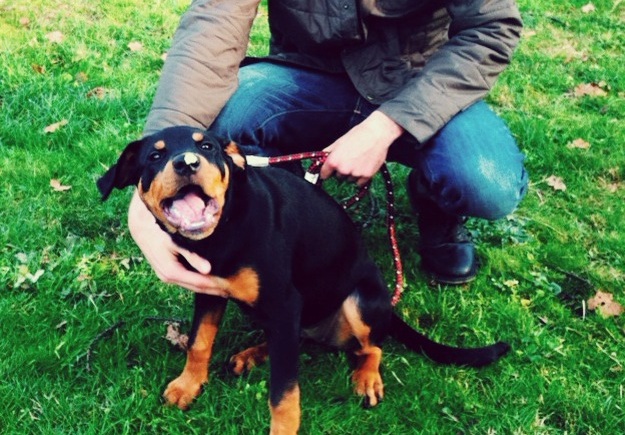Probably the number one thing that everyone spends time researching when they get a new puppy is housebreaking.
I read a ton of different articles in order to get a complete picture, so I thought I’d try to include it all here in one place for future puppy owners, so that they don’t have to search multiple websites.
Best way to get started with housebreaking
I really really recommend the crate method. This was what we did, and you can read more about the benefits of crate training in the link I included, but here is a rundown of how to use it for housebreaking:
When you get a new young puppy (8ish weeks), they will NOT be housebroken. It’s not physically possible. Even if they do have some sense of “Going outside is better,” (which they likely won’t!) they don’t have the bladder control to reliably hold it.
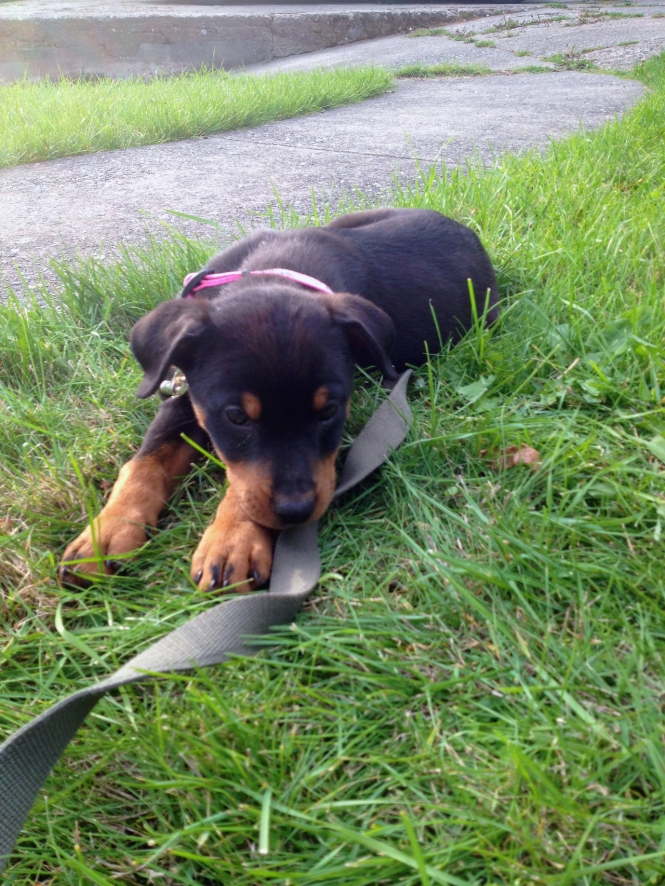
Betsy lying in the grass in our front yard after finally arriving home from the breeder.
So you need to use a strict strict schedule, and rule number one is: If you can’t watch them, they absolutely MUST be in their crate. Most puppies won’t soil their own sleeping area, so make sure you have a properly sized crate (properly sized meaning it’s big enough for them to stand up and turn around in, but no larger).
Rule number two of housebreaking is:
- Potty break after every nap
- Potty break after every meal
- Potty break after drinking water
- Potty break every 15 minutes when playing
Rule number three (this is not so much a rule as a way to make rule number two easier to manage)
- Feed your puppy its food and water while it’s in its crate
- This can buy you a few minutes after it finishes before you take it outside for a potty break
- When your puppy is super young, it’s easier to schedule its water instead of allowing it to free-drink, so that you know whether the puppy is empty or full. Note: This means you have to be very careful about making sure your puppy gets enough water throughout the day!
Rule number four?
- If they have an accident as young puppies, it’s not their fault, it’s YOUR fault.
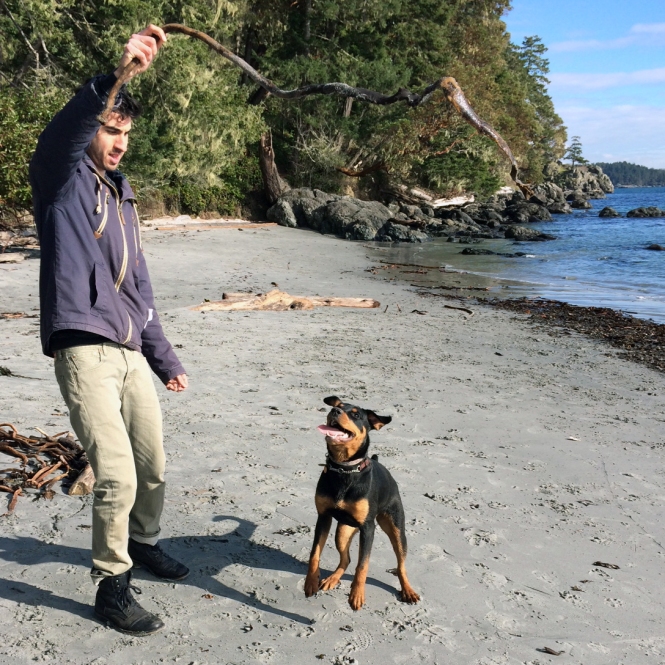
Betsy at 6 months old, playing with Ben at the beach.
Young puppies sleep a lot, so when you’re not playing with them, they should be happy to just nap in their crate. Here’s an example schedule of a day with a 8 week old puppy:
- 6am Wake up, take puppy outside for first potty break. (I carried Betsy at first, because if I allowed her to walk, she’d always stop and pee on the floor before we got there)
- 6:15am Puppy Playtime
- 7am Food and water in crate
- 7:15am Potty break
- 7:30am Naptime
- 8:30am Wakeup, potty break
- 8:45am Puppy Playtime
- 9:20am Water in crate
- 9:30am Potty Break
- 9:45am Naptime
- 10:45am Wake up, potty break
- 11am Puppy Playtime
- 11:45am Food and water in crate
- Noon Potty break
- 12:15pm Naptime
- 1:15pm Wake up, potty break
- 1:30pm Puppy Playtime
- 2:15pm Water in crate
- 2:30pm Potty break
- 2:45pm Naptime
- 3:45pm Wake up, potty break
- 4:00pm Puppy playtime
- 4:45pm Food and water in crate
- 5pm Potty break
- 5:15pm Naptime
- 6:15pm Wake up, potty break
- 6:30pm Puppy playtime
- 7:30pm Water in crate
- 7:45pm Potty break
- 8pm Puppy Playtime
- 8:30pm Potty break
- 8:45pm Puppy playtime
- 9:15pm Potty break
- 9:30pm Bedtime
Whew! Was that absolutely insane? Young puppies are insane. I felt like a zombie for our first few weeks. Obviously use your best judgement with your schedule; it’s somewhat flexible- it’s just to give you a basic idea of how a day can look.

Little Betsy enjoying a tummy-up nap.
Most importantly, puppies need millions of potty breaks, and will reliably go immediately after eating, playing, or sleeping.
What to do if you catch a puppy going in the house?
- Interrupt them with a quick hand clap and then lift them up and carry them out to the grass, praising them once they go outside.
What to do if they go in the appropriate location?
- Praise like crazy! We did not use treats, but in retrospect, I think it would have helped as well.
As they get older they will be able to hold it for longer and you can slowly loosen up. I was really worried about how I would know when the time is right, but it really is just common sense. You’ll know.
What to do if you take them outside and they don’t go and instead start to play or lie down
Back in the crate, wait five minutes, back outside to try again. Rinse and repeat until they go potty. It’ll happen, don’t worry.
Cleaning stains
Make sure you use an enzymatic cleaner (and maybe some baking soda?) to eliminate any smells from accidents. Dogs will go where it smells like a bathroom, so you don’t want your house to smell like a bathroom!
DO NOT use Ammonia based cleaners, as they smell similar to urine.
Puppies that start to only go in a certain part of the house
Probably smells like a bathroom there! Clean clean clean, and start to spend more time in that part of the house, so that the puppy views it as a part of the ‘den’ that it doesn’t want to soil. One way to avoid having a puppy that pees in little-used rooms is to use baby gates & slowly expand the puppy’s territory. We didn’t do this because we were too cheap to pay for baby gates 😉
At what age should they stop having accidents?
It varies! Don’t beat yourself up. Betsy gradually eased up. First she’d have two-three accidents a week, then one accident a week, then one every three weeks, and so on. A lot of the stuff I read online were articles like “Potty train your puppy in just one week!” And then I’d feel like a failure because we’d had Betsy for two MONTHS and she still wasn’t 100% reliable.
I think it fully depends on the puppy – some are better at ‘getting it’ than others. Betsy was weird – as she got older, she’d ask to be let out 99% of the time, but once in awhile she’d randomly decide to pee in the hallway instead.
I’d say 90% of her accidents happened while we were actively supervising her, so we’d interrupt her and move her outside right away. You REALLY don’t want your puppy having accidents without you noticing. That’s why unsupervised puppies should ALWAYS be in their crate.
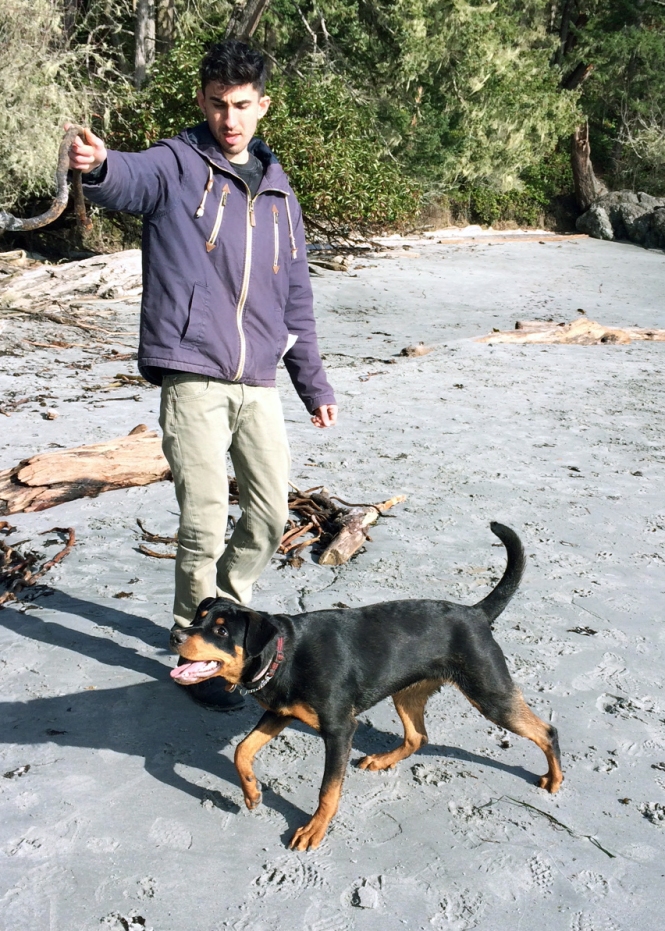
Another shot of 6 month old Betsy playing at the beach.
Betsy did have a few accidents (maybe 3?) that happened without us noticing (all three were while we had company over, surprise surprise) Most of these happened when she was a bit older and we thought she was mostly reliable, so we had let our guard down a little. Big mistake. I’d always beat myself up over it for an hour or two after the fact, but hey! Looking back, she was doing very very well. She wasn’t a wonder-dog who learned potty training overnight, but overall, it was a breeze.
How do you know when they’re 100% potty trained?
When you stop worrying about whether they’ll go when you’re not watching. Betsy is 6 months old now and I still worry, although her last accident was 4 weeks ago. If she manages another 4 weeks without having an accident, I think I’ll start to relax.
